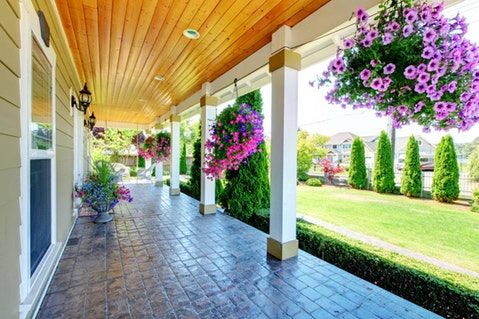Homeowner Insurance
from Rockland Insurance
Homeowner Insurance
What does Home Insurance Cover?
Homeowners insurance offers a wide range of protections. It not only covers your home and possessions but also offers liability protection in the event someone is injured at your house. It will even help cover the cost of hotels and restaurants if your home is unlivable.
We thought it might be a good idea to do a quick refresher on what a homeowners insurance policy actually covers.
Structure of your home
A homeowners policy will pay to rebuild or repair your home if it is damaged or destroyed by a covered peril, up to your coverage limits. While covered perils can vary depending on the type of policy you purchase, in most cases a standard policy will cover damage from:
- Fire and smoke
- Lightning strikes
- Windstorms and hail
- Explosion
- Vandalism and malicious mischief
- Damage from an aircraft, car or vehicle
- Theft
- Falling objects
- Weight of ice, snow or sleet
- Water damage
It should be noted that water damage does not include flood damage, a standard homeowners policy does not cover flood or earthquake damage.
In addition to your home, the majority of policies will also cover detached structures and out buildings. Garages, tool sheds, even gazebos are covered for roughly 10 percent of the total amount of insurance you carry on the house.
As an example, if you carry $250,000 in coverage on your home, any detached structures would be covered up to $25,000.
Homeowner policies are designed to cover sudden and unexpected damage, they do not cover normal wear and tear on a home.
Personal Belongings
In addition to your home and other structures on your property, a homeowners policy will help replace all of your personal property that is damaged or destroyed by a covered peril. Personal belongings are usually covered at 50 to 70 percent of the coverage you are carrying on your home.
Personal belongings such furniture, clothing, electronics, artwork and everything else that lives inside your home is covered.
Personal belongings can quickly add up so doing a home inventory will help you determine if you have enough coverage. If not, it is possible to up your coverage levels or add a rider, especially if you have a significant amount of high-value items.
High value items such as jewelry, furs, collectibles, and art are covered but come with limits. These limits will vary but $1,500 is fairly common. If you have a large amount of high value items in your home you will need a special personal property endorsement or rider to fully protect these items. In some cases you may need to have your items appraised.
In addition to the personal possessions in your home, homeowners insurance will cover items that are off premises. It covers items in storage units as well as property that you have with you when you are traveling. Many insurers limit this coverage to 10 percent of the amount of insurance you are carrying for your possessions.
In addition to the property inside your home, homeowners insurance will also cover trees, plants and shrubs although most insurers put a $500 per item limit on landscaping.
Liability Protection
The liability portion of a homeowners insurance policy will protect you from lawsuits for bodily injury or property damage that you or members of your family cause to other people. It will also deal with damage that is caused by pets.
Bodily injury liability covers things such as someone falling in your home, slipping on your sidewalk, or being bitten by the family pet. It will help pay medical bills as well as any lawsuits that arise from the situation. It covers the cost of your defense as well as any court award, up to your policy limits. It should be noted that liability coverage does not cover your own injuries.
Property damage liability will step up if you damage someone else’s property. As an example, if you or your child manages to knock over an expensive vase at the neighbor’s house, property damage liability will cover the cost. However, it doesn’t provide protection if you (or more likely your child) destroys your own property.
Liability limits usually start around $100,000 and go up from there. In most cases, experts recommend carrying at least $300,0000. If you have significant assets you may want to up the limits even higher or consider an umbrella policy.
Additional Living Expenses
Most homeowner policies offer additional cost of living expenses in the event your home is unlivable after a claim. If your roof is blown off or your home is completely destroyed by a hurricane you will need somewhere to live while it is rebuilt.
It will cover hotel bills, eating at a restaurant as well as other costs that exceed your normal living costs. This coverage does have both daily expense limits, as well as a time limit. Check your policy for your specific limits.

 Get a
Get a 



